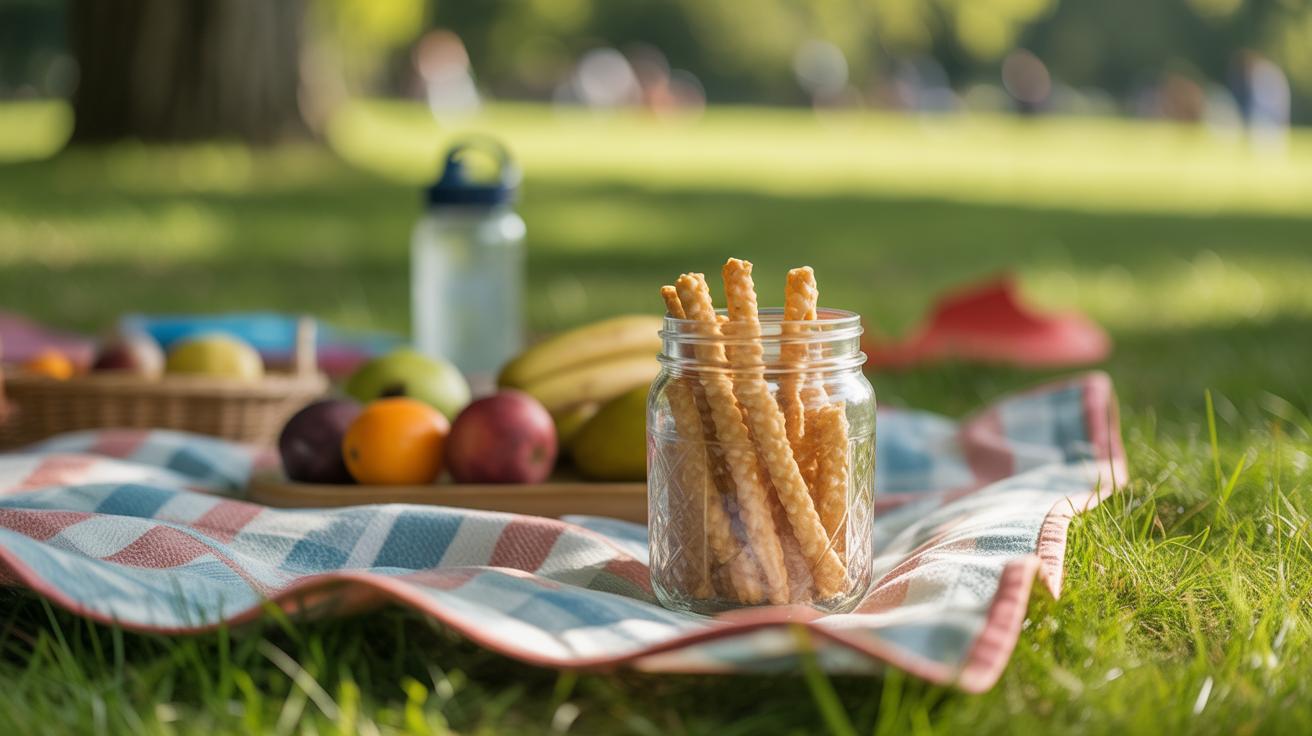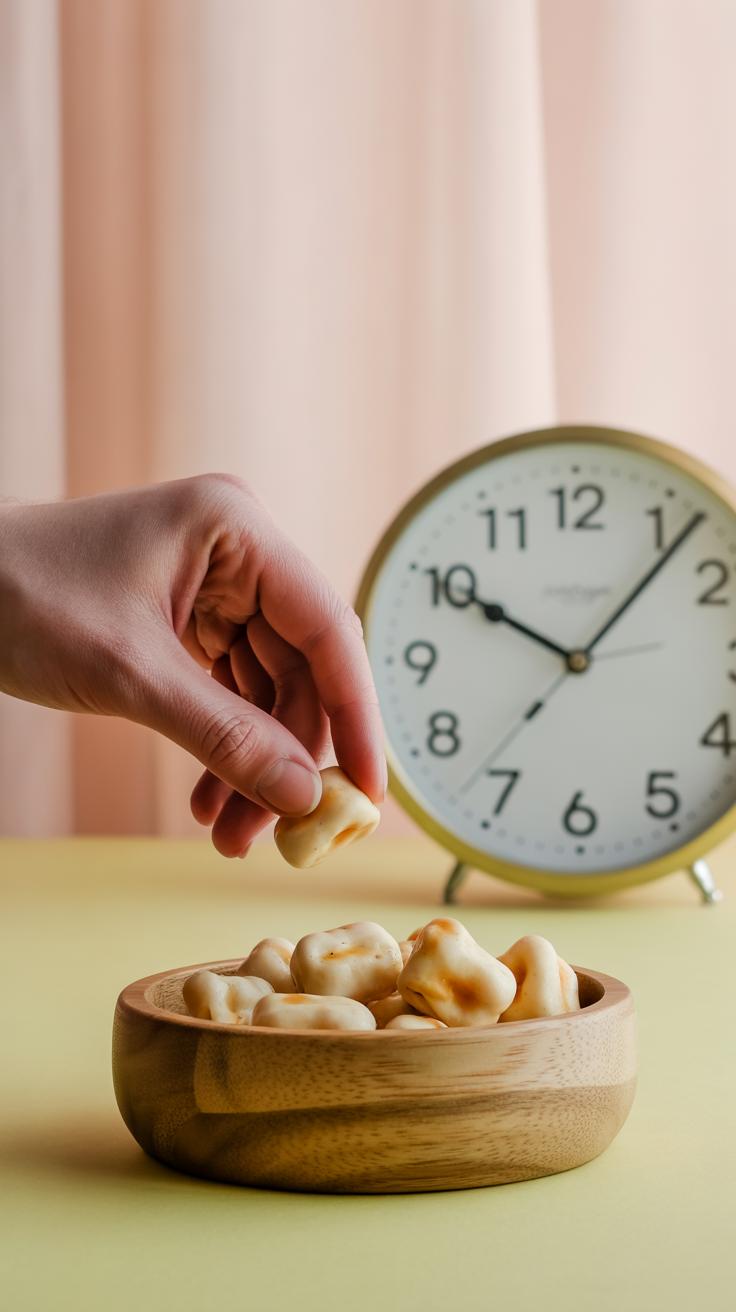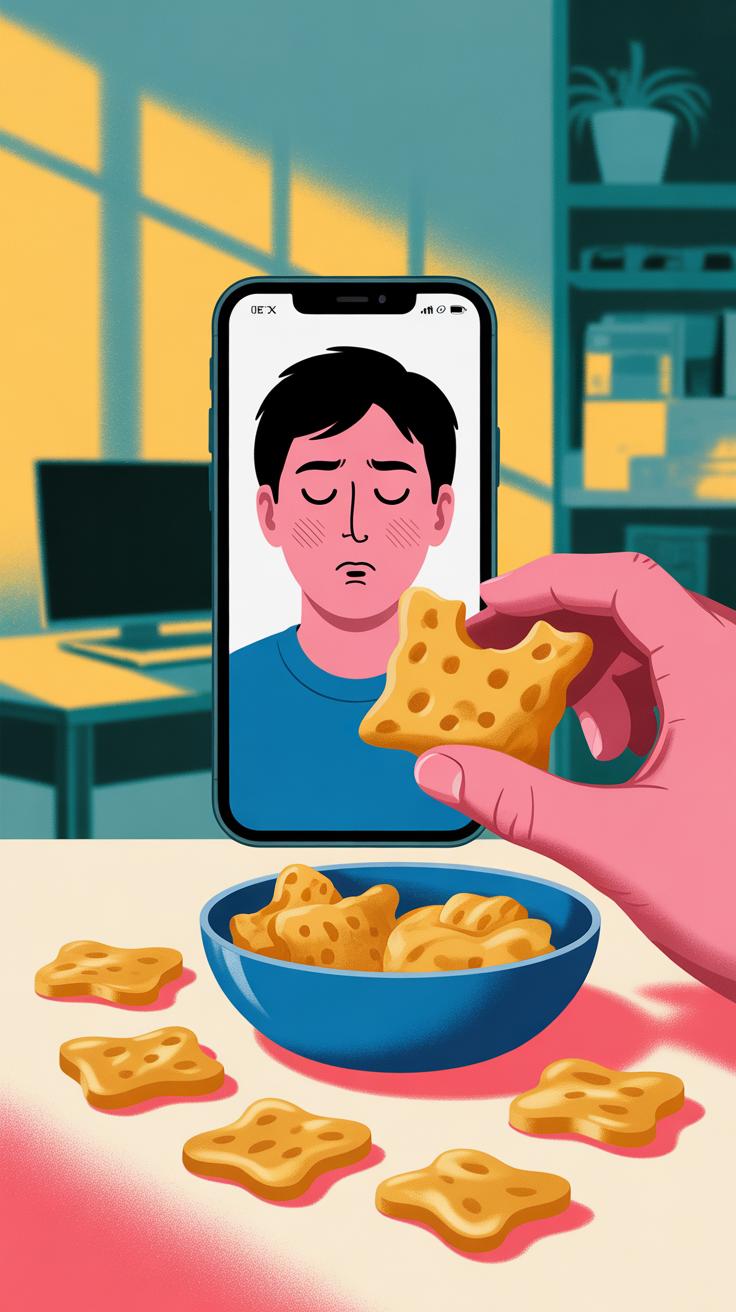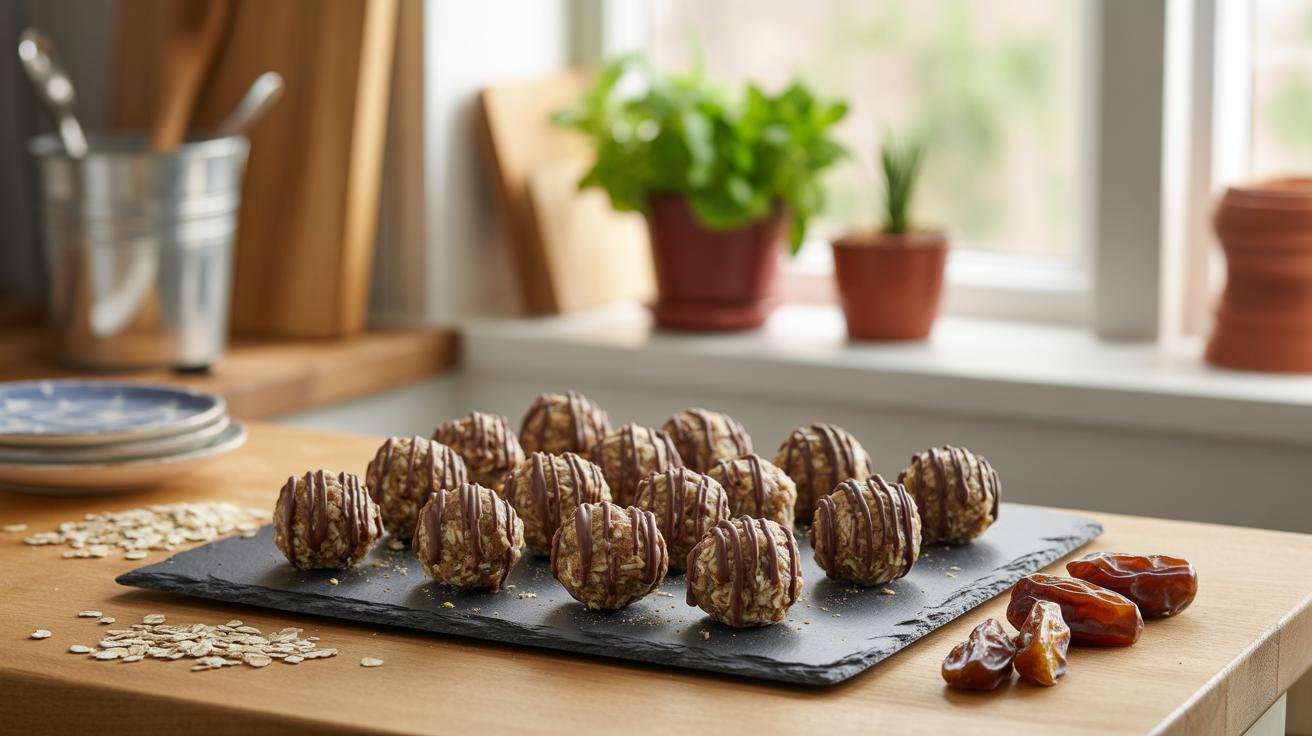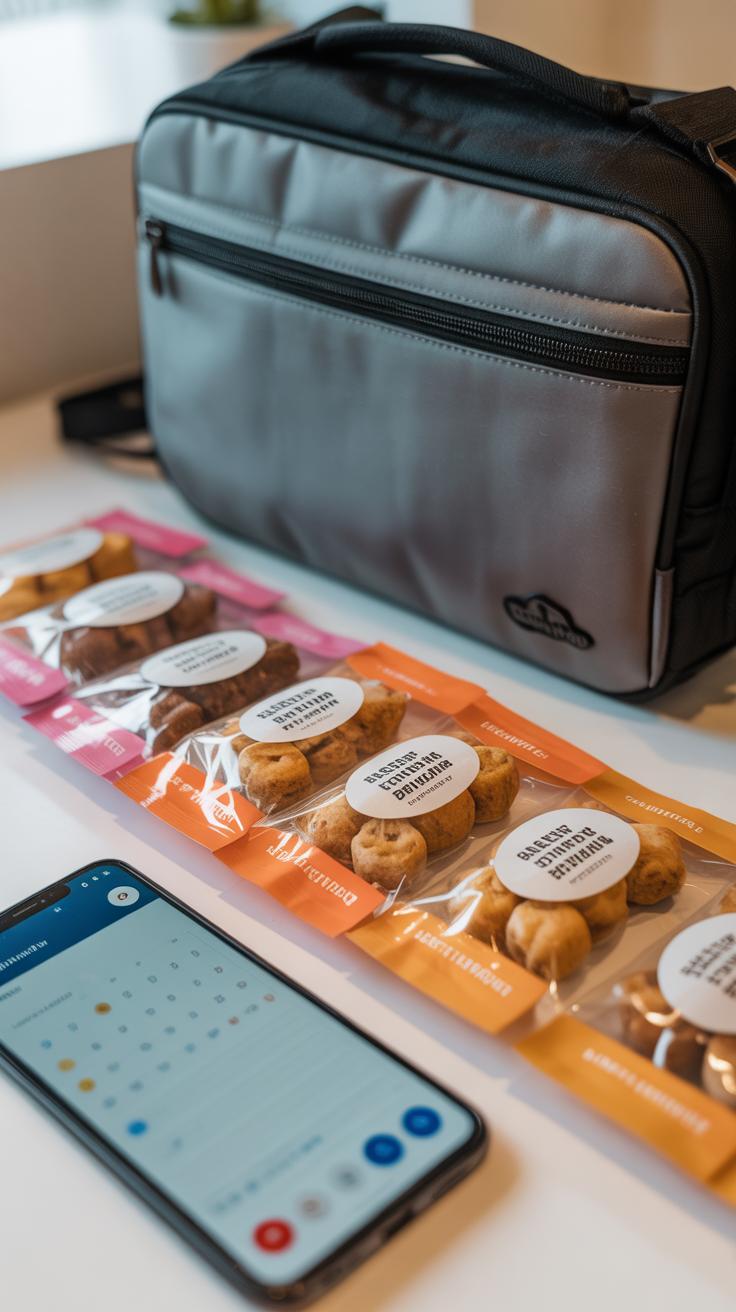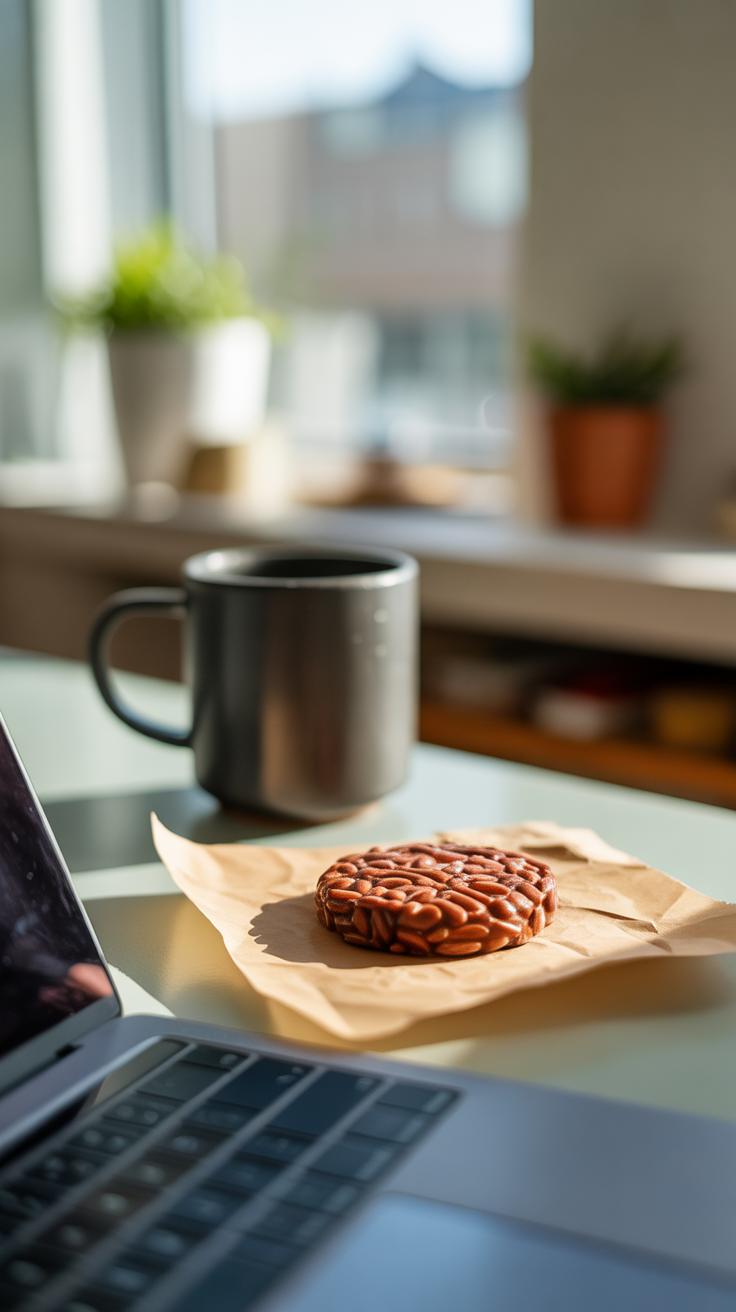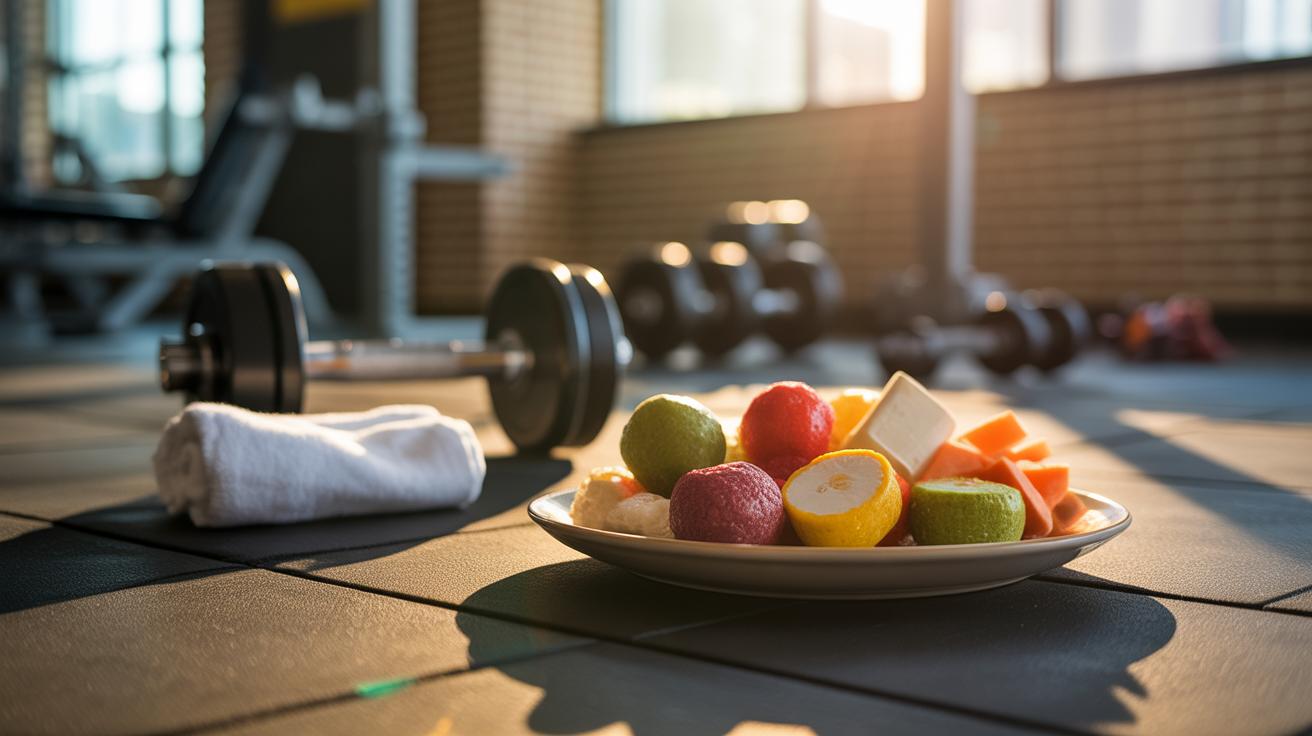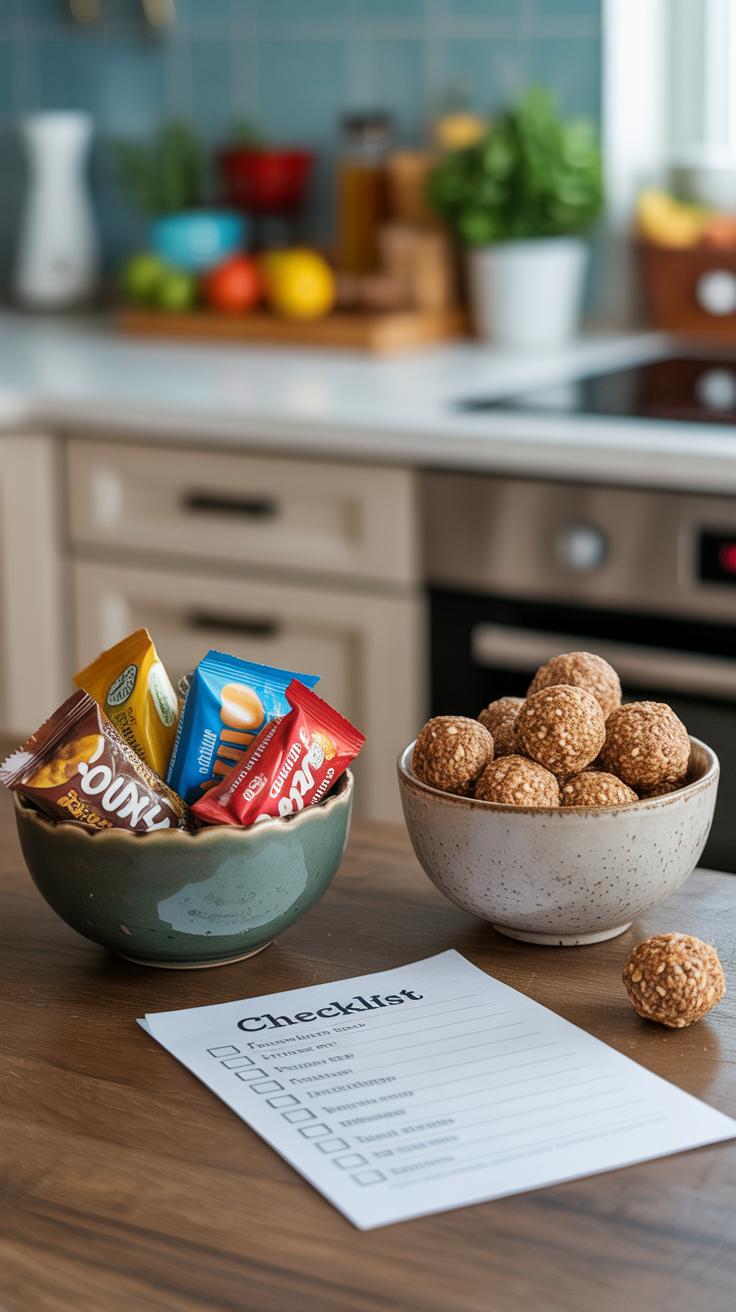Introduction
If your afternoons often drag with low energy or strong hunger pangs, choosing the right snacks can make a big difference. Healthy protein snacks provide a satisfying way to curb those afternoon cravings, helping you stay full and focused until your next meal. Protein plays a key role in supporting your muscles and maintaining steady energy levels throughout the day.
This article explores why protein snacks are ideal for afternoon hunger, offers simple snack ideas you can prepare quickly, and tips on making smart choices when selecting snacks. By the end, you will have practical ways to add easy and tasty protein options to your daily routine.
Why Choose Protein Snacks for Afternoon Hunger
When afternoon hunger hits, reaching for protein-rich snacks can be a smart move. Protein plays a unique role in managing hunger because it slows digestion, helping you feel satisfied longer than carbs or fats alone. This kind of slow-burning effect is exactly what you need to avoid that slump or sudden urge to binge on sugary treats.
Think about it this way: your body processes protein differently than, say, a cookie or a handful of chips. It doesn’t cause that quick spike and crash in blood sugar, which often triggers more cravings. So when you snack on something with a solid protein punch—like a boiled egg, some nuts, or Greek yogurt—you’re more likely to keep your hunger in check until dinner.
Does this mean protein snacks are a magic wand? Not quite. But they do provide a kind of steady energy and prevent those gnawing sensations that lead to less healthy choices. Maybe that’s why some people find their afternoons much smoother when they plan their protein intake just right.
How Protein Helps You Feel Full Longer
Protein impacts how full you feel, largely because it affects hormones that signal satiety in your brain. When you eat protein, your body releases peptides that tell you to stop eating sooner, and this can really reduce the tendency to snack mindlessly. It almost acts like a natural brake on your appetite.
Sometimes it’s surprising how much a protein snack can suppress cravings. I remember once trying plain almonds in the afternoon instead of my usual chocolate bar—it wasn’t just about cutting calories but actually feeling content until dinner. It made me realize that protein isn’t just about muscle-building; it can control the urge to reach for what’s convenient but often less healthy.
Still, keep in mind that sheer protein quantity isn’t the whole story. The type of protein matters, and combining it with some fiber can further help keep hunger at bay. So a protein snack paired with a little fruit or veggie might be the best combo when you want to feel full for good.
Protein and Energy Levels During the Day
Afternoons can be tough—energy dips and mental fog set in, making it harder to focus. Protein can play a subtle but meaningful role here. Unlike quick-burning carbs, protein provides a steadier release of fuel that your cells use to keep your energy even.
That steady supply helps your brain function better too. You’ve probably noticed how skipping snacks or choosing sugary options can leave you groggy. Protein supports neurotransmitters linked to alertness and memory, so it’s not just about feeling full but staying sharp.
Of course, the effect isn’t dramatic or immediate, and it varies person to person. Still, I’d say protein’s role in maintaining energy and mental focus throughout the day is often overlooked. Choosing protein snacks in the afternoon might not feel like a big deal until you realize how much it helps you avoid that familiar lag, making the rest of your day feel a bit more manageable.
Understanding Afternoon Cravings
Common Foods People Crave
Afternoon cravings often lean toward sweets, salty snacks, or carb-heavy options. You might notice yourself reaching for chocolate, chips, or cookies around mid-afternoon—sometimes without even thinking much about it. These foods usually deliver quick bursts of pleasure or energy, which explains their appeal.
But there’s more going on than just taste. Sugary treats provide fast glucose, causing a rapid spike in blood sugar, followed by a crash that can leave you feeling even hungrier later on. Salty snacks might hit a different note, stimulating your body’s need for sodium and triggering thirst. Greasy or heavy foods often satisfy a kind of comforting hunger, though they might slow you down eventually.
How Blood Sugar and Hormones Affect Cravings
Your body’s chemistry plays a big role, honestly. Blood sugar levels fluctuate naturally throughout the day, and when they dip, hunger signals intensify. Ghrelin, the so-called ‘hunger hormone,’ rises, nudging you toward eating. At the same time, dopamine—the neurotransmitter linked to pleasure—gets involved, making certain foods feel more rewarding.
What’s tricky is that this isn’t always straightforward. Sometimes, your body craves a sugar hit not just because of low blood sugar but because it’s seeking a dopamine kick, a bit of mood lift after a long day. This mix of signals can blur the lines between real hunger and emotional or habitual cravings.
Have you ever noticed wanting a snack even when you’re not really hungry, maybe just tired or bored? That’s this whole hormonal interplay at work. Understanding this mess can help you choose smarter snacks that keep you steady instead of spiraling into sugar crashes or endless snacking cycles.
Signs You Need a Protein Snack
Physical Indicators of Hunger
It’s tricky sometimes to tell if you’re really hungry or just thirsty—or maybe even bored. You might notice your stomach quietly rumbling or a dull ache low in your abdomen. Those are usually clearer signs of hunger. If you feel shaky, lightheaded, or your energy dips suddenly, your body is signaling it needs more fuel.
But what if your throat feels dry or you’re just restless? Those could mean you need water or a quick break, not necessarily food. I’ve caught myself reaching for snacks only to realize a glass of water was what I needed. Real hunger tends to build gradually and doesn’t go away with hydration alone.
Another clue is how focused you feel. True hunger can make it tough to concentrate, though sometimes stress or fatigue might do the same; it’s a fine line. Pay attention to how these feelings evolve. Are they creeping up slowly or coming on suddenly? That might help you decide whether to eat or sip some water first.
When to Reach for a Protein Snack
Timing your protein snack can change your afternoon entirely. If you wait too long after lunch, your blood sugar could dip enough that you overeat later, maybe at dinner or mindlessly grab whatever is closest. A well-timed protein snack, say two to three hours post-lunch, can stabilize energy and control cravings.
Some days you might feel like skipping the snack because lunch was large or filling, but even then, a small protein bite can keep you steady. The goal isn’t to fill up but to support your body with steady fuel. Try to avoid snacks that are mostly carbs late in the day; they can spike then crash your energy.
Think about how your afternoons usually go—when do your energy levels flag? If you know your pattern, planning a protein snack around that dip can prevent the fatigue and hunger that often sneak up unexpectedly. It’s a kind of simple strategy, but it helps avoid the “hanger” that messes with focus or mood.
Simple Protein Snack Ideas for Busy Days
When afternoon hunger hits and you barely have time to think, having quick, easy protein snacks on hand can make all the difference. No need to fuss over cooking or complicated recipes—sometimes simple is just what you need.
No-Cook Protein Snacks
Grab a handful of nuts like almonds or walnuts. They’re portable and packed with protein and healthy fats. A small container of Greek yogurt works too, especially if you keep it chilled. Cheese slices or string cheese can fill that gap swiftly and without any prep. Ready-to-eat items like turkey jerky or roasted chickpeas also offer solid protein–and you don’t even have to open the kitchen.
Of course, these are just a few options. You might find yourself preferring one over the other depending on your mood or energy level. Have you noticed how sometimes yogurt feels more refreshing, while nuts feel more filling? It varies.
Easy DIY Protein Bites
If you have five extra minutes, try making simple protein bites at home. Mix peanut butter, oats, honey, and a scoop of protein powder. Roll into balls, and voilà—portable snacks that keep you fueled. You can swap peanut butter for almond butter or add dark chocolate chips if you want a little treat.
Another quick recipe involves blending cottage cheese with flaxseeds and a bit of cinnamon, then forming bite-sized dollops to chill. It sounds odd but tastes surprisingly good. These homemade bites let you control ingredients, so you avoid hidden sugars or additives found in store-bought bars.
Are homemade bites worth the tiny effort? For me, on busy days, yes. They feel like a small win against unhealthy snacking. Maybe you’ll agree, or maybe you’ll stick strictly to no-cook favorites. It’s really about what fits your routine and feels doable.
Incorporating Protein Snacks into Your Routine
Planning ahead makes a world of difference when it comes to fitting protein snacks into your day. If you’ve ever found yourself scrambling for something to eat mid-afternoon, you know how tempting less healthy options can be. A little prep can prevent that. Try setting aside time on weekends or evenings to pack snacks for the week. Things like boiled eggs, small containers of Greek yogurt, or portioned nuts can be lifesavers.
Carrying snacks with you is key, but it doesn’t mean lugging around a cooler or something bulky. Think compact: single-serve nut butter packets, roasted chickpeas in a small jar, or a protein bar chosen with quality ingredients. Keeping these within reach can help you avoid those energy slumps that hit unexpectedly.
Planning Ahead for Healthy Snacking
Some simple tips might help:
- Make snack packs by dividing nuts or seeds into small containers.
- Cook extra portions of high-protein foods at dinner to use later as snacks.
- Keep a list of go-to snacks handy, so you don’t waste time deciding when hunger strikes.
- Choose snacks that don’t spoil quickly so you won’t feel pressured to eat them right away.
Finding what works can take trial and error. Maybe you try hard-boiled eggs one week, then switch to cottage cheese the next. That variation can keep things interesting while making planning feel less like a chore.
Balancing Protein Snacks with Meals
It’s easy to think of snacks as mini-meals, but they don’t need to replace balanced eating. Portion control matters. A snack should generally contain about 10 to 20 grams of protein. Too much, and you might lose your appetite for dinner. Too little, and it won’t really curb cravings.
Pairing protein with some fiber or healthy fat can slow digestion and keep you feeling full longer. For example, combine a handful of almonds with a little cheese or have apple slices with peanut butter. These combos subtly support your body’s energy without overwhelming your system.
Have you noticed how some snacks leave you energized, while others just make you feel sluggish? That’s because the balance of nutrients influences your next meal and your overall rhythm for the day. So, think about your snack as part of the bigger picture, not just a quick fix.
Protein Sources That Suit Different Lifestyles
Animal-Based Protein Snacks
If you eat animal products, there are plenty of convenient and satisfying options that pack a protein punch. Beef jerky is one of those snacks that can last long without refrigeration, making it perfect for busy afternoons. It’s rich in protein and low in carbs, but watch the sodium content—sometimes it sneaks up on you.
Cheese also fits right in as a portable snack. A small handful of cheese cubes or string cheese can help stave off hunger between meals. It offers fats and protein, which together can keep you feeling full. Some might find it a bit heavy, though, especially if you’re trying to avoid dairy or limit saturated fats.
Yogurt, especially Greek yogurt, combines creaminess with protein. It’s a great choice if you have a mid-afternoon lull and want something refreshing. Just keep an eye on added sugars; not all yogurts are created equal. A plain, unsweetened version with a few nuts or berries mixed in can be surprisingly satisfying.
Plant-Based Protein Snacks
For vegetarians and vegans, protein sources often come from nuts, seeds, legumes, and soy products. Nuts like almonds and pistachios are go-to snacks—you get protein, fiber, and healthy fats all in one serving. Yet, they can be calorie-dense, so portion control matters more than we sometimes realize.
Seeds, such as pumpkin or chia seeds, also provide good protein content and are easy to sprinkle on salads or eat by the handful. Some find their texture a bit unusual at first, but once you get used to them, they work well as a crunchy snack.
Legumes, like chickpeas or edamame, can be roasted or steamed for a savory treat that’s full of fiber and protein. Tofu might not seem like a typical snack, but small, marinated cubes served cold or warm can surprise you with how filling they are.
Do you find switching between animal and plant proteins tricky? Maybe mixing these options based on your day’s energy needs could help. Protein isn’t just about what to eat—it’s about what fits into your lifestyle without feeling like a chore.
Avoiding Common Snack Pitfalls
When you’re reaching for a protein snack, it’s easy to assume that anything labeled “high protein” must be good for you. But here’s the catch—not all protein snacks are created equal. Some come packed with added sugars or unhealthy fats, which can turn a smart choice into a less-than-ideal one. You might feel better thinking you’re making a healthy decision, but the presence of these additives can counteract your effort to curb cravings or boost energy.
Look out, for example, at certain protein bars or powders that sneak in sweeteners or saturated fats to improve taste or texture. They may deliver protein, sure, but at what cost? These extras can cause energy crashes or leave you hungrier than before. It’s tricky because packaging often highlights the protein content boldly, while the other ingredients get glossed over.
Beware of Added Sugars and Unhealthy Fats
Added sugars aren’t just empty calories; they can spike your blood sugar and trigger cravings shortly after you eat. That spike defeats the purpose of a satisfying, steady energy boost. Similarly, some protein snacks use oils high in saturated or trans fats to stay shelf-stable or improve mouthfeel. These fats don’t support heart health and may make snacks more calorie-dense without much nutrition.
So, if your protein snack lists sugar, corn syrup, or hydrogenated oils near the top of its ingredients, pause before digging in. Protein should be the focus, not a disguise for less healthy ingredients.
Reading Nutrition Labels Carefully
Labels don’t have to be confusing. With a bit of practice, you can spot what matters most for your snack. First, check the protein amount—aim for at least 5 to 10 grams per serving if you want it to hold you over. Next, glance at total sugars. Ideally, keep it under 5 grams, but that depends on your personal limits and goals.
Don’t skip the ingredient list. If you see long, chemical-sounding names or too many additives, it’s worth questioning. Also, compare calories to protein—some items may seem perfect but pack calories with little protein payoff.
It helps to think about your own response, too. Did a snack taste satisfying and keep you from grazing later? Or did it leave you reaching for something else soon after? That’s a sign the label doesn’t tell the full story.
How Protein Snacks Support Weight Management
Protein plays a unique role when it comes to managing weight, especially through snacking. It’s not just about calorie counting; protein influences how hungry you feel. When you eat protein-rich snacks, they tend to make you feel fuller for longer stretches, which can help keep those afternoon cravings in check.
Why does this happen? Protein affects hormones that regulate appetite, like ghrelin and peptide YY. When protein intake goes up, ghrelin—the hunger hormone—drops, while the hormones that signal fullness increase. This biological effect means you’re less likely to reach for extra snacks or bigger portions later on.
But, it’s not only about stuffing yourself with any protein source. If your snack is protein-heavy but also loaded with sugars or fats, the extra calories can pile up quickly, maybe undoing the benefit.
So what should you do? Here are a few pointers to help you choose filling snacks without unnecessary calories:
- Opt for snacks with a good balance of protein and fiber, like Greek yogurt with berries or a small handful of nuts and apple slices.
- Look out for snacks that combine protein with water or bulk—think cottage cheese or boiled eggs alongside veggies—to add volume without many extra calories.
- Avoid processed, highly flavored protein bars that might seem healthy but sneak in sugars and fats that add up fast.
- Portion control matters. Even perfect protein snacks can add extra calories if eaten in large quantities.
Personally, I’ve found that a modest portion of hummus with carrot sticks or a small serving of turkey slices keeps me comfortable and focused during the afternoon slump. Yet, sometimes I still feel tempted to grab something more indulgent, which shows that while protein helps, it’s also about habit and mindfulness.
Does this mean protein snacks are a magical solution? Probably not on their own, but they do create a foundation that helps you avoid overeating and stick closer to your weight goals. Have you noticed how you feel after a protein snack compared to something carb-heavy? It’s worth paying attention.
Tracking Your Snack Choices and Effects
Writing down what you snack on can reveal more than you might expect. Keeping a snack journal isn’t just about listing foods. It’s about noting how you feel before and after eating—a simple way to connect your choices with your energy and hunger levels throughout the afternoon.
Try including a few quick details each time you snack:
- What you ate and roughly how much
- When you ate it
- How hungry you felt before snacking
- Your energy or mood afterward
This process might feel tedious at first, but it helps you catch patterns. Maybe certain protein snacks keep you steady longer, or some leave you craving more soon after. Or maybe timing matters—you feel better with a snack closer to lunch, rather than late afternoon.
Based on what you track, try tweaking your snack choices or timing. If a handful of nuts makes you sluggish but Greek yogurt lifts you up, adjust accordingly. The goal is not rigidity but awareness. When I started this, I found surprising shifts in how my afternoon energy behaved. You might too.
After a week or so, review your notes. Does hunger really drop after protein-rich options? Are some snacks more of a treat than a fuel source? Keep experimenting. Your journal is a simple tool helping you find what works best for you.
Conclusions
Eating healthy protein snacks can help you manage your afternoon hunger more effectively. Protein fuels your body and mind and keeps you from feeling overly hungry between meals. By picking snacks with good protein content, you can power through your afternoon without needing sugary or overly processed foods.
Remember to plan ahead and keep a variety of simple protein snack options available. This way, you can satisfy cravings while supporting your overall nutrition and energy. Now you know why protein snacks matter and how to enjoy them. Try different options and find what works best for you.

